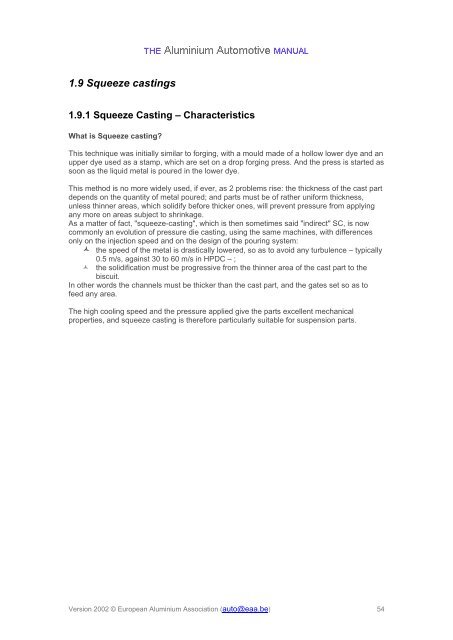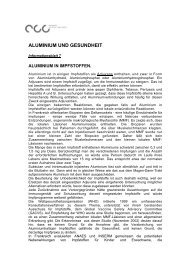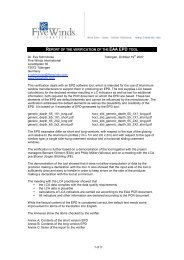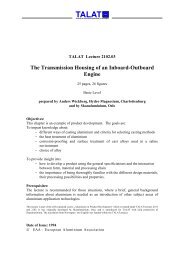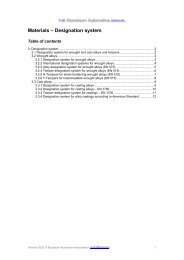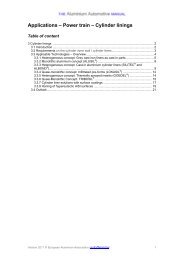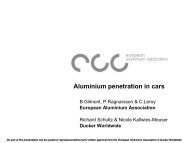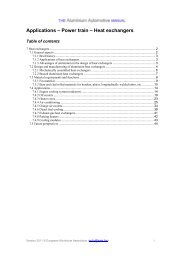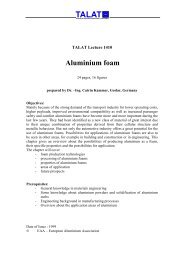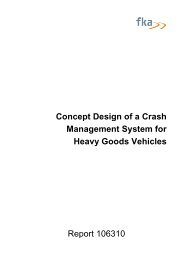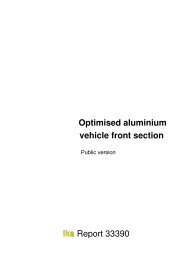Manufacturing – Casting methods - European Aluminium Association
Manufacturing – Casting methods - European Aluminium Association
Manufacturing – Casting methods - European Aluminium Association
Create successful ePaper yourself
Turn your PDF publications into a flip-book with our unique Google optimized e-Paper software.
1.9 Squeeze castings<br />
1.9.1 Squeeze <strong>Casting</strong> <strong>–</strong> Characteristics<br />
What is Squeeze casting?<br />
This technique was initially similar to forging, with a mould made of a hollow lower dye and an<br />
upper dye used as a stamp, which are set on a drop forging press. And the press is started as<br />
soon as the liquid metal is poured in the lower dye.<br />
This method is no more widely used, if ever, as 2 problems rise: the thickness of the cast part<br />
depends on the quantity of metal poured; and parts must be of rather uniform thickness,<br />
unless thinner areas, which solidify before thicker ones, will prevent pressure from applying<br />
any more on areas subject to shrinkage.<br />
As a matter of fact, "squeeze-casting", which is then sometimes said "indirect" SC, is now<br />
commonly an evolution of pressure die casting, using the same machines, with differences<br />
only on the injection speed and on the design of the pouring system:<br />
the speed of the metal is drastically lowered, so as to avoid any turbulence <strong>–</strong> typically<br />
0.5 m/s, against 30 to 60 m/s in HPDC <strong>–</strong> ;<br />
the solidification must be progressive from the thinner area of the cast part to the<br />
biscuit.<br />
In other words the channels must be thicker than the cast part, and the gates set so as to<br />
feed any area.<br />
The high cooling speed and the pressure applied give the parts excellent mechanical<br />
properties, and squeeze casting is therefore particularly suitable for suspension parts.<br />
Version 2002 © <strong>European</strong> <strong>Aluminium</strong> <strong>Association</strong> (auto@eaa.be) 54


